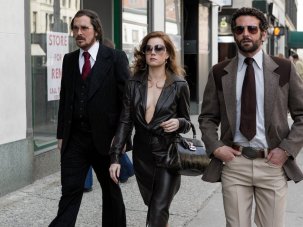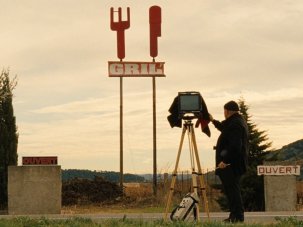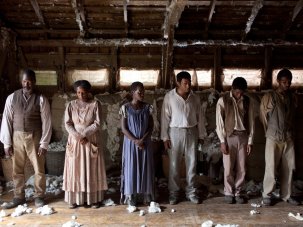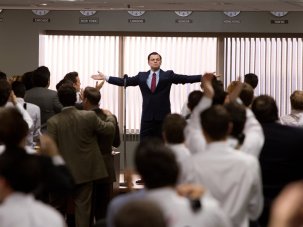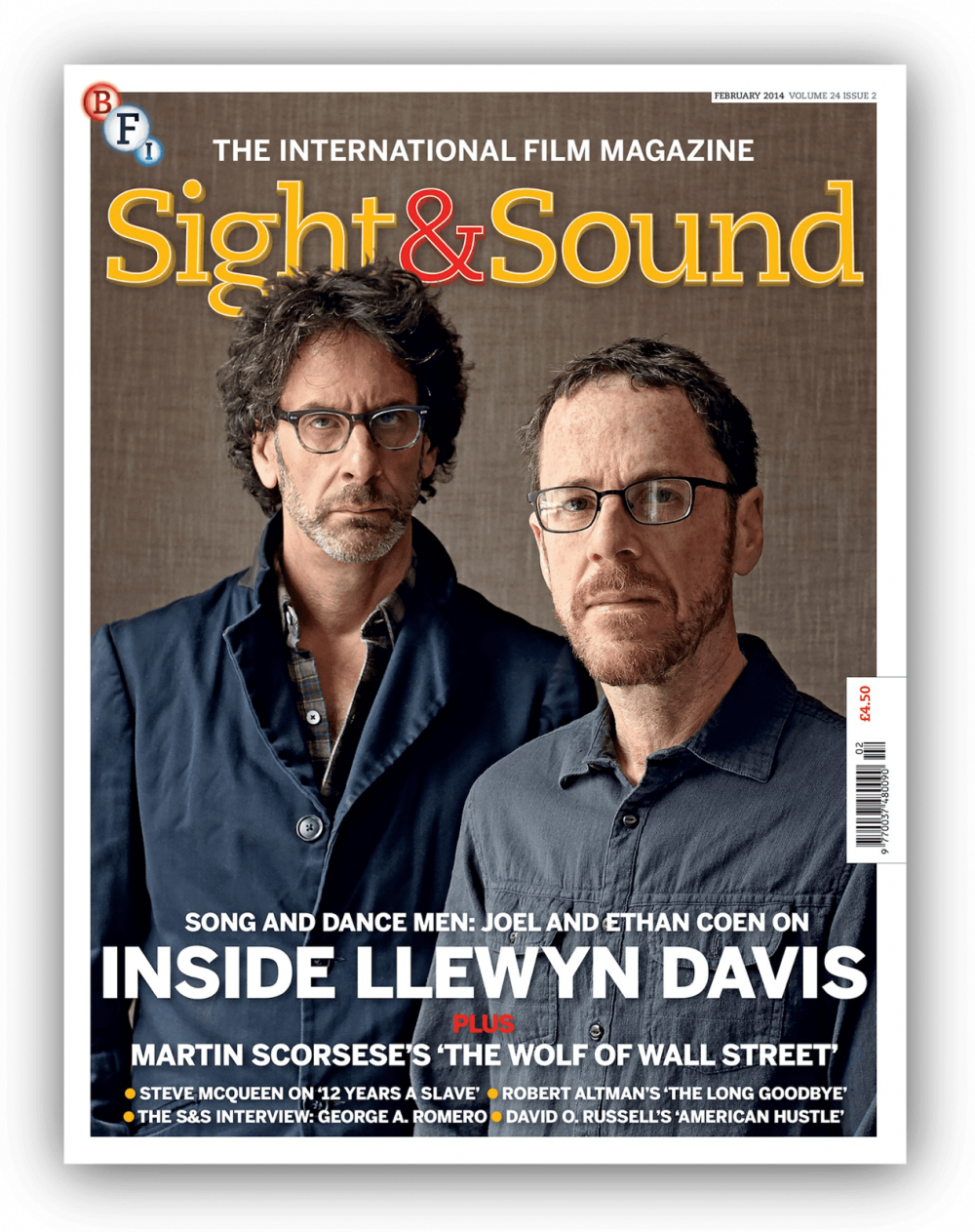
“You make the character an asshole, then you have people constantly screaming at him that he’s an asshole, then the audience starts to feel sorry for him, even though they know he is an asshole”
— Joel Coen
|
Posted to subscribers and available digitally 3 January On UK newsstands 7 January |
The mechanics of dramatic empathy are as ironic as just about everything else in the world of the Coen brothers, our February cover interviewees. Set in the 1960s folk music scene of a “wintry, slushy grey, overcast Greenwich Village”, familiar from the cover of The Freewheelin’ Bob Dylan, with plot points knowingly shadowing fellow folk traveller Dave Van Ronk’s The Mayor of MacDougal Street: A Memoir, their new Inside Llewyn Davis is “a stringent voyage of overcast skies, melancholy folk, soured relationships and no direction home,” note our reviewers J.M. Tyree and Ben Walters.
Even more than their previous American roots odyssey O Brother, Where Art Thou?, it’s also teeming with self-aware yet richly resonant traditional music, expertly unearthed by the brothers’ ‘music archivist’ T Bone Burnett. He discusses the Coens’ archaeological musical interests with Frances Morgan – while the brothers open up to Nick James about the “hamster wheel” of success in which they sometimes feel caught, in strange reflection of their character’s circuitous dolours.
This is the season for the redoubtable American movies, lining up for their awards, so a year after the American-history triple whammy of Django Unchained, Lincoln and Zero Dark Thirty, it’s time again to visit the underbelly of the land of opportunity.
“Have you ever been to Louisiana?”, Steve McQueen asks Jonathan Romney. “It’s so beautiful – but the most horrible things happen in the most beautiful places.” The heat of the South is palpable on the skin and in the behaviour of the characters in McQueen’s typically physical 12 Years a Slave, though it’s what Romney calls the “horrific networks of fresh welts, bodies cut open like so much meat” that’s the first thing you’ll recall of the film. McQueen explains why he needed us to see slavery’s horrors “visually, mentally, psychologically, physically.”
In his latest Bildungsroman The Wolf of Wall Street, based on former Wall Street snake-oil salesman Jordan Belfort’s memoirs of his outrageous rampage through the early 1990s, Martin Scorsese strikes a very different tone. The insider perspective may echo the director’s earlier “fast rides through descending spirals of guilt-free hedonism and depravity,” writes Ian Christie, but there are American traditions at play here beyond the racketeer: sundry WASP masters of the universe, salesmen-evangelists, even the conman-fantasist Frank Abagnale also played by Leonardo di Caprio in Catch Me If You Can. Indeed, while Christie is finally moved to place the film in the “raucous tradition” of Preston Sturges’ manic satires, Scorsese’s editor Thelma Schoonmaker talks us through how they achieved its tone of “ferocious and unexpected” black farce, thanks to “tons of improvisation pouring into my editing room.”
Elsewhere in this issue, Kim Newman tracks the screen fortunes of Raymond Chandler’s cloaked crusader Philip Marlowe through the prism of Robert Altman’s 1973 distillation The Long Goodbye; king of the zombies George A. Romero talks apocalypse, defiance, style and imitation in the Sight & Sound Interview with James Blackford; Kieron Corless brings us French “hunter of images” Raymond Depardon and his archive travelogue Journal de France; and Isabel Stevens guides us through the dizzying dynamism of 1920s Soviet film-poster art. Plus Mexico’s multiplex kingpin, Richard Williams on Miles Davis, David Robinson on Chaplin, Frances Morgan on Lizzie Borden, Michael Brooke on Joe Dante, Henry K. Miller on Mark Kermode and much more…
-
Sight & Sound is now available in digital editions for Apple iOS, Android and Kindle Fire as well as computer desktops. Scroll this gallery to browse this issue’s sections.
-
RUSHES: Richard Williams on Miles Davis’s score for Louis Malle’s Lift to the Scaffold; Hannah McGill on period dramas; five key Al Pacino performances; Trevor Johnston talks to superfly guy Eric Steel; Mark Cousins has no worries about being critical.
-
THE INDUSTRY: Charles Gant on Dallas Buyers Club; Charles Gant on a lean year for foreign film; Ben Roberts has some friendly advice for the Bifas; Nick Roddick meets Alejandro Ramírez Magaña of Mexico’s global cinema chain Cinépolis.
-
FESTIVALS: Nick Bradshaw on the world’s largest doc festival, Amsterdam’s IDFA; Isabel Stevens revels in the spirit of innovation at Copenhagen’s CPH:DOX.
-
The Coen brothers’ Inside Llewyn Davis follows a folk-singer trying to hang tough in the face of despair in the early 1960s. By Nick James. PLUS Frances Morgan talks to music producer T Bone Burnett about recreating Greenwich Village through song.
-
In 12 Years a Slave, the true story of a black man forced into slavery in America’s Deep South, Steve McQueen puts into practice his belief that “if you don’t see it visually, mentally, psychologically, physically, there’s no picture”. By Jonathan Romney.
-
The shabby, mumbling insomniac of Robert Altman’s The Long Goodbye is one of the more memorable cinematic incarnations of Marlowe to walk Chandler’s mean streets. By Kim Newman.
-
Shooting the past In Journal de France the great French photographer and documentarist Raymond Depardon tours France in a camper van, while looking back at half a century spent observing the world. By Kieron Corless.
-
For all its echoes of his previous work, Scorsese’s The Wolf of Wall Street sees the director expand his range, and capture the American zeitgeist as strongly as Goodfellas. By Ian Christie. Plus Thelma Schoonmaker on editing the film.
-
Though Soviet art is often dismissed as dreary propagandist kitsch, in the 1920s Russian designers revolutionised the art of the film poster, bringing new techniques and a dizzying dynamism to the form. By Isabel Stevens.
-
THE S&S INTERVIEW: As his classic Creepshow is rereleased on Blu-ray, the king of the zombies recalls a life spent among the undead. By James Blackford.
-
WIDE ANGLE: Júlio Bressane’s cinema of the subconscious; the queasily playful world of Emily Wardill; David Robinson hails Chaplin, supertramp; Michael Pattison at the Seville European Film Festival; Frances Morgan on Lizzie Borden’s Born in Flames.
-
FILMS OF THE MONTH: American Hustle, Dallas Buyers Club, The Invisible Woman, Teenage, plus 27 more new releases reviewed.
-
HOME CINEMA: Geoff Andrew is astonished by the range of The Complete Eric Rohmer; Pamela Hutchinson on the majestic flight scenes in William Wellman’s Wings; Charlie Fox on the forgotten youth of Reagan-era America in Streetwise, plus 15 more reviews.
-
BOOKS Michael Brooke enjoys a study of Joe Dante’s career; Henry K. Miller on Mark Kermode’s Hatchet Job; Jonathan Romney gets lost in a study of Kubrick’s The Shining; Philip Kemp admires Christopher Frayling’s monograph on The Innocents.
-
ENDINGS: Kim Newman explodes Kiss Me Deadly.
Features
Inside the wheel
The folk-singing protagonist at the heart of the Greenwich Village scene in the early 1960s in Inside Llewyn Davis is trapped in a cycle of endless misfortune, trying to make a success of things against the odds. But then, as the Coen brothers suggest, isn’t that a bit like life? By Nick James.
A history of violence
Steve McQueen’s 12 Years a Slave observes with raw, unflinching brutality the true story of a free black man who is forced into slavery in America’s Deep South – a visceral and distressing portrait of racial abuse that underscores the director’s belief that “if you don’t see it visually, mentally, psychologically, physically, then there’s no picture”. By Jonathan Romney.
Street legal
Robert Altman’s The Long Goodbye recasts Bogart’s wise-cracking, lip-curling hard-man Marlowe from The Big Sleep as a shabby, mumbling insomniac adrift on the mean streets of Los Angeles – one of the most memorable in a run of adaptations reconfiguring Chandler’s distinctive universe for the big screen. By Kim Newman.
Shooting the past
For half a century Raymond Depardon has been filming and photographing France and the wider world. His latest documentary, Journal de France, juxtaposes his unique archives with the travelogue of a contemporary camper van tour of his native land. By Kieron Corless.
Birth of a salesman
For all its apparent echoes of his previous work, Scorsese’s The Wolf of Wall Street sees the director expand his range, experimenting with a new vein of social comedy that helps capture the American zeitgeist as strongly as ‘Goodfellas’ and ‘Casino’ – this time not as gangster noir but as black farce. By Ian Christie.
Revolution in design
Though Soviet art is often dismissed as dreary propagandist kitsch, in the 1920s Russian designers revolutionised the art of the film poster, embracing abstraction and surrealism, bringing new techniques and a dizzying dynamism to the form. By Isabel Stevens.
The Sight & Sound Interview: George A. Romero
The director’s 1968 low-budget indie classic Night of the Living Dead helped reinvent horror cinema for the modern era, setting the tone for the subversive apocalyptic visions that would define his work over the next 45 years. Here, the original king of the zombies recalls what got him started, how his style evolved, why he remains defiant and what he thinks of the new breed of pale-faced imitators. Interview by James Blackford.
Regulars
Editorial
On the aftermath of polls
Rushes
In the frame: All that jazz
Miles Davis’s moody soundtrack for Lift to the Scaffold proved a turning point, freeing him from the conventions of modern jazz. By Richard Williams.
Object lesson: Period dramas
Menstruation remains one of cinema’s last great taboos, and the humble tampon a bafflingly rare sight on screen, says Hannah McGill.
The five key Al Pacino performances
Just when Pacino thought he was out, a BFI retrospective has pulled him back in. Here we select his very best work. By Nick James.
Interview: Reel life
Kiss the Water director Eric Steel explains how he got hooked by the tale of an artisan artist who spent her life making anglers’ flies. By Trevor Johnston.
Dispatches: Situation critical
The pessimists are convinced the end is nigh for film criticism in the digital age – but perhaps criticism isn’t what they think it is, says Mark Cousins.
The industry
Development tale: Dallas Buyers Club
Concerns over the commercial viability of a tale about an unlikely Texan Aids activist kept the project on ice for more than 20 years. By Charles Gant.
The numbers: 2013 in review
How it works: Beefing up BIFA
Does Harvey Weinstein have something to teach the British Independent Film Awards about delivering audiences? By Ben Roberts.
Profile: Alejandro Ramirez Magana
The head of Mexico’s global cinema chain Cinépolis talks arthouse film, tapping the Indian market and the pleasures of salsa on popcorn. By Nick Roddick.
Festivals
IDFA: Forays with camera
After a remarkable year for documentaries, the world’s biggest documentary film festival seemed a little on the quiet side, but there were still a few gems to be found. By Nick Bradshaw.
CPH:DOX: Staying true to its roots
Despite an expanded focus on activism, Denmark’s rising documentary festival still found space for the kind of esoteric work with which it made its name. By Isabel Stevens.
Wide angle
Profile: The music of light
For more than 40 years, Brazil’s Júlio Bressane has been harmonising a huge range of sources into a unique cinema of the subconscious. By Aaron Cutler.
Artists’ moving image: Skating on thin ice
Emily Wardill’s films combine disparate, playful and bizarre imagery with a distinctly queasy emotional undertow. By Charlie Fox.
Primal screen: the world of silent cinema
Chaplin’s Tramp remains film’s most universal icon a century after his not entirely auspicious screen debut. By David Robinson.
Festival: The view from the bottom rung
Political agitation and impressively understated performances were to the fore at this year’s Seville European Film Festival, reports Michael Pattison.
Soundings: Trapped and free
Lizzie Borden’s Born in Flames is noted for its post-punk music but its soundtrack’s array of female voices is just as fascinating, says Frances Morgan.
Reviews
Films of the month
American Hustle
Dallas Buyers Club
The Invisible Woman
Teenage
plus reviews of
After Tiller
Age of Uprising/Michael Kohlhaas
Anchorman 2: The Legend Continues
The Armstrong Lie
August: Osage County
The Best Man Holiday
Black Nativity
The Book Thief
Bullett Raja
Crystal Fairy & the Magical Cactus and 2012
Delivery Man
Getaway
The Hobbit: The Desolation of Smaug
Inside Llewyn Davis
Journal de France
Killing Oswald
Kiss the Water
Labor Day
Lone Survivor
Moon Man/Der Mondmann
Moshi Monsters: The Movie
Oldboy
Out of the Furnace
The Patrol
The Secret Life of Walter Mitty
12 Years a Slave
The Wolf of Wall Street
DVD features
This charming man: The Complete Eric Rohmer
Eric Rohmer is known as a director of exquisitely subtle conversation pieces. But as a major new release reminds us, he was so much more. By Geoff Andrew.
Revival: Fight and flight
One of cinema’s first blockbusters, Wings depicted blood and guts on the ground and spectacular battle scenes in the skies. By Pamela Hutchinson.
plus reviews of
Baby Peggy: The Elephant in the Room
Bus Stop
Creepshow
Dark Days
Far From Vietnam
Fireworks Wednesday
Guest Wife
Intolerance
Invasion of the Body Snatchers
The Land of Hope
The Phantom of the Opera
Weekend of a Champion
Television reviews
An Age of Kings
The Following – Season 1
Spyship
Lost and found
The heartbreak kids
Filmed among Seattle’s teenage drifters and castaways in 1984, Streetwise is a bleakly bewitching portrait of life on the fringes. By Charlie Fox.
Books
Michael Brooke enjoys a study of Joe Dante’s career.
Henry K. Miller on Mark Kermode’s Hatchet Job.
Jonathan Romney gets lost in a study of Kubrick’s The Shining.
Philip Kemp admires Christopher Frayling’s monograph on The Innocents.
Letters
Blue is the Warmest Colour and the ‘male gaze’; Ikarie XB I and Pavel Jurácek; the neglected Peter Greenaway; William Wyler’s wonderful heart; sex and central heating; prostitution fantasies.
Endings
Kiss Me Deadly
The final scenes of the noir classic are a rare example of a studio imposing an even bleaker ending than its filmmaker had intended. By Kim Newman.
Further reading
-
The Digital Edition and Archive quick link
Log in here to your digital edition and archive subscription, take a look at the packages on offer and buy a subscription.




